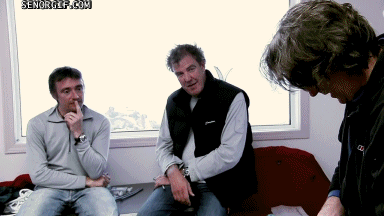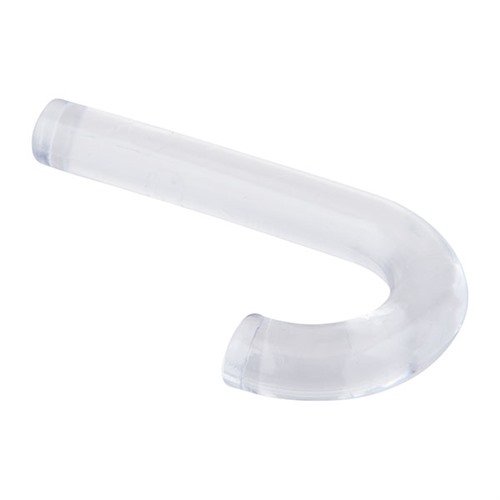

|
|
|
#1 |
|
Proper way to PROVE gun is safe?
Not sure if this is the right place to post this, so apologies in advance.
I just finished and passed my CFSC and CRFSC course. We were taught the following to PROVE that the gun was safe: 1. remove magazine(s) 2. engage safety and keep it on if possible 3. observe feeding path/chamber 4. Observe barrel (from the breach) And my personal favourite:  5. Observe bore from the MUZZLE (when observing through the breach is not possible) with a bore light. Is this the right procedure? I was taught to never EVER look down the barrel of a firearm throughout airsoft from the muzzle and then they tell us to do this with real steel? Apparently these are the CIVILIAN procedures, and completely different from MILITARY procedures. What are your thoughts and opinions of this way to PROVE it is safe? Does it make sense, or is this just the routine "true" but "bad" way to verify the barrel is clear that is later taught again in a different way at gun clubs and such? |
|
|
|

|
|
|
#2 |
|
Point in safe direction.
Remove source of ammunition. Observe the feed path. Verify the feed path. Examine the bore. EDIT: I cringe every time I see someone do this on the range. In my experience, each previous point overides the next, you must always point in a safe direction. Therefore, examining the bore from the muzzle (though taught and required to say to pass your test) is the most retarded thing about sitting the PAL. You can observe an sight obstructed bore with a bore light at the muzzle end, or you can put the light AT THE MUZZLE end and observe from the breach. This is the way it's done on the range. Point at a bright spot down range and observe the feed path. It can be done in only a few seconds.
__________________
  Ár skal r?*sa, sá er annars vill fé eða fjör hafa. Sjaldan liggjandi úlfur lær um getur né sofandi maður sigur. Last edited by ShelledPants; December 24th, 2015 at 00:03.. |
|
|
|

|
|
|
#3 |
 2 Cent Tactical 2 Cent Tactical |
While not common practice, military does prove safe in the same manor (looking down the barrel form the muzzle end) in ceremony.
I know there is a picture of the MND staring down the barrel of a C7 floating out there somewhere, can't find it though. While I don't enjoy doing it, it is 100% necessary for some firearms where you can not properly observe the entire barrel from the rear. You are not just looking to see if there is a round in the chamber, you are looking for any and all obstructions. You have already proven the chamber and feed path clear so its safe to look down the barrel. Adding in a bore light is what I like to do though, it blocks the chamber and feed path thus preventing anything somehow getting in there, and it illuminates the bore so you can properly prove that it is safe as well.   My instructors were fine with us using a snake or cleaning rod w/ patch or brush to prove the bore safe as well. <-- This is my preferred method. Barrel obstructions are no joke and you should check for them.
__________________
Last edited by Cobrajr122; December 24th, 2015 at 00:11.. |
|
|

|
|
|
#4 | ||
|
Quote:
That's what I said in class, but the instructor insisted this is the proper way to observe it. It feels so weird looking down the bore. Quote:
This was covered in our course for single-action revolvers where the barrel could not be observed so we used the cleaning rod too. |
|||
|
|

|
|
|
#5 | |
|
Quote:
|
||
|
|

|
|
|
#6 |
|
Prancercise Guru
|
After I open the bolt. breech, what have you and inspect the chamber from loading end to insure It's clear I put my thumb in the breech and use my nail to reflect light down the bore to inspect it from the muzzle end.
__________________
Airsoft, where nothing is hurt but feelings. |
|
|

|
|
|
#7 | |
 2 Cent Tactical 2 Cent Tactical |
Quote:
Anything that takes a cartage will not have any live element that would not be observable from the rear of the chamber/feed path unless something crazy has gone wrong. If you can see a clear chamber and remove everything from the feed path you are good to go. Like I said though, get a bore light to block off the chamber so nothing can get in there. Chances are you will have a firearm that you can easily remove the bolt and observe the bore from the rear though.
__________________
|
|
|
|

|
|
|
#8 | |
|
Quote:
|
||
|
|

|
|
|
#9 |
|
The purpose of looking down the bore is to determine that there is no debris or junk AFTER it has been determined to be unloaded. It makes sense as a "belt and suspenders" approach at the beginning of your shooting day to check that no crap during transportation made its way in there.
Unfortunately, that point is not emphasised and in that entire waste of a weekend they rarely show what the explosive consequences of barrel obstructions can be. I cant think of an instance where "live" ammunition cant be observed while the barrel is pointed downrange, but checking for squibs and such its the only way other than a cleaning rod |
|
|
|

|
|
|
#10 |
|
Lego Head
|
Ya'll laugh, but looking down the barrel is in fact IN the damn PAL course as part of how you prove a weapon safe.
It is always the last part of the process; you would never start with looking down the barrel. Because you have cleared the magazine from the firearm, and checked the chamber for any live munition at this point examining the barrel should be safe. The reality is at that point with an open action and cleared chamber the only possible way you get injured by looking down the barrel is two stage munitions. Seeing as HE/Incendiary are prohibited you're pretty much 100% safe. It is also an important part of proving the firearm SAFE to ensure that there is no debris or blockage in the barrel. the gun is not SAFE to load and fire if this is not ensured. Proving safe is not only for cleaning and storage but future use as well.
__________________
_________________________________ "The hydrogen economy car from the people who brought you the 'Hindenburg'" - Glen Foster Condoms do not guarantee safe sex any more. A friend of mine wore one and was shot by the woman's husband! |
|
|

|
|
|
#11 |
|
Looking down the barrel proves the gun is safe, clear and gives us the Darwin Award winner. It also serves as chlorine for the gene pool.
Win-win all around.
__________________
Age verifier Northern Alberta Democracy is two wolves and a sheep discussing what's for dinner. Freedom is the wolves limping away while the sheep reloads. Never confuse freedom with democracy. |
|
|
|

|
|
|
#12 | |
|
Prancercise Guru
|
Quote:
__________________
Airsoft, where nothing is hurt but feelings. |
|
|
|

|
|
|
#13 | ||
|
ASC's Whiny Bitch
|
An alternate to most of the tools mentioned above, put your damn thumb in the action area, your thumb will reflect enough light off the nail to clearly see, as well as block the action from chambering or firing a round if one somehow magically appears.
That said, while I don't personally like doing it, there's nothing really wrong with it as you've already removed the magazine and ensured the chamber is clear. Looking down the muzzle is simply to ensure you have no obstruction, such as dirt, snow, cleaning tool parts or a bullet (From a squib load or whatever other reason) To touch on Cobra JR's first comment about certain types of firearms, have fun barrel checking a Lever Action or most .22 without doing this. It's easy on bolt actions, not so much on some other guns, unless you want to strip them down a bit. Quote:
As I am a black powder shooter: Flintlock - Remove flint, ensure fizzle pan is clear, use your loading rod to check. Any BP shooter who's even semi smart will mark their loading rod for this reason. Usually two lines, one to indicate empty, the other to indicate the proper load level. Some will make a third to indicate ball, but a load level would indicate this based on the powder charge. Percussion - Same as above. Revolvers - You're checking the cylinders and nipples. No cap on the nipple means the gun isn't legally loaded and has no ignition source, now, inspect the cylinders (From the front, as that's how you load the charge and shot), once this is done, try look down the barrel in you can angle a light source, though it's unlikely. I usually just shove a cleaning brush down until I can see it in the cylinder gap Other muzzle loaders are the same as flint, with different mechanisms. Simply remove whatever ignites them. Majority of these are rather rare, I can count the number of Wheel Lock and Matchlock firearms I've seen, outside of display and museum pieces, on two fingers. My training/experience: 9 years CF reserve Shooting with family since about 6 years old 8 years of owning my own guns and being OCD about their safe handling.
__________________
Quote:
Certified Level 3.1415926 Orbital Weapons platform Certified Last edited by Gato; December 24th, 2015 at 16:07.. |
||
|
|

|
|
|
#14 |
|
How much sand CAN you fit in your vagina!?
|
NEVER-EVER look down the barrel, was what I was taught as well, unless of course the barrel is removed. Use a light.
__________________
I have developed a new sport called Airhard. Pretty much the same as Airsoft, except you have to maintain an erection... |
|
|

|
|
|
#15 |
|
"I like syrup on my blue waffles." #diseasedvagina
|
I was told that for pistols, you remove mag, rack rack rack, look down barrel from chamber side, put thumb in chamber, look down barrel from the muzzle. No idea about rifles though.
|
|
|

|
  |
|
||||||
| Bookmarks |
|
|
 |